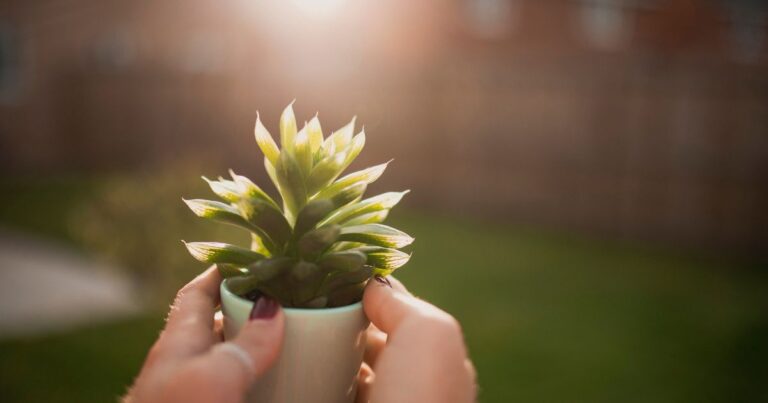dormant plumeria: how to care for your plant during the winter months
Understanding Dormant Plumeria
Recognizing Dormant Plumeria
Recognizing dormant plumeria is essential to ensure that the plant is healthy. A dormant plumeria will have no leaves, and the branches will be bare. The leaves will turn yellow and fall off during the fall season. The plant will not produce any new growth and will appear lifeless. However, the roots of the plant will still be alive, and the plant will survive the dormant period.
Dormant Plumeria vs Healthy Plumeria
A healthy plumeria will have green leaves and produce new growth. The plant will have a vibrant appearance and will be actively growing. In contrast, a dormant plumeria will have no leaves and will not produce any new growth. It is essential to understand the difference between a dormant plumeria and a healthy plumeria to ensure that the plant is healthy.
Dormant Plumeria in Different Climates
Dormant plumeria in different climates will have varying dormancy periods. In tropical climates, plumeria will not go dormant and will continue to grow throughout the year. In contrast, plumeria in colder climates will go dormant during the winter months. The dormancy period for plumeria in colder climates can last up to six months.
To better understand the dormancy period for plumeria in different climates, refer to the following table:
| Climate | Dormancy Period |
|---|---|
| Tropical | None |
| Subtropical | 1-2 months |
| Temperate | 3-6 months |
Understanding the dormancy period for plumeria in different climates is essential to ensure that the plant is healthy and to know when to expect new growth.
Caring for Dormant Plumeria
Watering and Feeding
During dormancy, plumeria plants require less water and no fertilizer. Overwatering can cause root rot and damage the plant’s health. Stop watering the plant completely when the leaves fall off, and only water it again when new leaves start to grow. Use well-draining soil to prevent water from accumulating and causing root rot.
Temperature and Light Requirements
Plumeria plants are tropical and prefer full sun or bright light. During dormancy, they can tolerate cooler temperatures but not freezing temperatures. If you live in a colder climate, consider moving your plumeria plant indoors during the winter months.
Indoor vs Outdoor Care
When caring for plumeria plants during dormancy, the care differs depending on whether the plant is indoors or outdoors. Indoor plumeria plants require less water and no fertilizer, as they are not actively growing. Keep them in a bright location with good air circulation. Outdoor plumeria plants should be protected from freezing temperatures and strong winds. Cover them with a frost cloth or move them indoors during the winter months.
| Indoor Care | Outdoor Care |
|---|---|
| Less water and no fertilizer | Protected from freezing temperatures and strong winds |
| Bright location with good air circulation | Covered with a frost cloth or moved indoors during winter months |
Remember to keep the soil moist but not overly wet, as too much moisture can cause root rot. By following these simple care instructions, your plumeria plant will remain healthy and ready to bloom when the growing season begins.
Plumeria Dormancy and Blooming
Plumeria is a deciduous plant that goes through a period of dormancy during the winter months. During this time, the plant sheds its leaves and stops producing new growth. The plant will remain dormant until the days start getting longer, and the temperature starts to warm up.
Preparing for Bloom
To prepare your plumeria for blooming, it is important to keep the plant in a warm, sunny location during the summer months. Plumeria requires plenty of sunlight to produce the energy it needs to produce blooms. Ensure that the plant is getting at least six hours of direct sunlight each day.
During the summer months, it is also important to provide your plumeria with plenty of water. The plant should be watered deeply once a week, and the soil should be allowed to dry out slightly between waterings. Overwatering can cause the roots to rot, which can lead to the death of the plant.
Maximizing Flowering Potential
To maximize the flowering potential of your plumeria, it is important to provide the plant with the nutrients it needs to produce strong, healthy blooms. A balanced fertilizer with a high phosphorus content is recommended. Phosphorus is essential for flower production and can help to increase the number of blooms your plant produces.
It is also important to prune your plumeria regularly to encourage new growth and remove any dead or diseased branches. Pruning should be done in the spring, just before the plant starts to produce new growth.
In conclusion, plumeria dormancy is a natural process that occurs during the winter months. By providing your plant with the right conditions during the summer months and maximizing its flowering potential, you can enjoy beautiful, fragrant blooms throughout the summer.
| Entity | Relevant Information |
|---|---|
| Blooms | Plumeria produces blooms during the summer months. |
| Summer | Plumeria requires warm, sunny conditions during the summer months. |
| New Growth | Pruning can encourage new growth and increase the number of blooms. |
| Flowering | A balanced fertilizer with a high phosphorus content can increase flowering potential. |
| Flowers | Plumeria produces beautiful, fragrant blooms. |
| Fragrant Blooms | Plumeria blooms are known for their sweet, fragrant scent. |
Troubleshooting Dormant Plumeria
Identifying Common Issues
Dormant plumeria can experience a number of issues that can prevent them from blooming properly. The most common issues include yellow tips, brown spots, and yellow leaves. These issues can be caused by a variety of factors, including overwatering, underwatering, and pests.
One of the most common issues with dormant plumeria is yellow tips. This is usually caused by overwatering or underwatering. If the soil is too wet, the roots can become waterlogged and the plant can’t absorb nutrients properly. If the soil is too dry, the plant can’t absorb enough water and nutrients, leading to yellow tips.
Brown spots are another common issue with dormant plumeria. This can be caused by pests, such as spider mites or mealybugs, or by fungal infections. If you notice brown spots on your plumeria, it’s important to identify the cause and take action to prevent further damage.
Preventing and Treating Rot
One of the most serious issues with dormant plumeria is root rot. This is caused by overwatering and can quickly kill your plant if left untreated. To prevent root rot, it’s important to make sure your plumeria is planted in well-draining soil and that you don’t overwater it.
If you suspect that your plumeria has root rot, it’s important to act quickly. Remove the plant from the soil and inspect the roots. If they are brown and mushy, they are likely rotting. Cut away any damaged roots and replant the plumeria in fresh soil.
Addressing Discoloration
If you notice that your plumeria leaves are turning yellow or dropping off, it could be a sign of a nutrient deficiency. Plumeria plants need a balanced fertilizer to thrive, so make sure you are providing them with the right nutrients.
If your plumeria leaves are turning brown, it could be a sign of sunburn. Plumeria plants need plenty of sunlight, but they can get burned if they are exposed to too much direct sunlight. If you notice brown spots on your plumeria leaves, move the plant to a shadier location.
| Issue | Cause | Solution |
|---|---|---|
| Yellow tips | Overwatering or underwatering | Adjust watering schedule |
| Brown spots | Pests or fungal infections | Identify cause and take action |
| Root rot | Overwatering | Remove damaged roots and replant |
| Discoloration | Nutrient deficiency or sunburn | Provide balanced fertilizer or move to shadier location |
Plumeria Propagation During Dormancy
Propagating from Cuttings
One of the most common ways to propagate Plumeria during dormancy is through stem cuttings. Cuttings should be taken from the parent plant during the dormant season, usually in the winter months. It is important to select healthy, disease-free stems with dormant buds. Cuttings should be 12-18 inches long and allowed to dry for a few days before planting.
Once the cuttings have dried, they can be planted in containers filled with well-draining soil. The cuttings should be planted at a depth of 1-2 inches and watered thoroughly. It is important to keep the soil moist but not waterlogged. After a few weeks, new growth should appear, indicating successful rooting.
Growing from Seed
Growing Plumeria from seed can be more challenging than propagating from cuttings, but it can be done during dormancy. Seeds should be collected from healthy parent plants and allowed to dry for a few days before planting.
Seeds can be planted in containers filled with well-draining soil. The soil should be kept moist but not waterlogged. After a few weeks, seedlings should appear. It is important to keep the seedlings in a warm, sunny location and protect them from frost.
| Propagation Method | Advantages | Disadvantages |
|---|---|---|
| Cuttings | Easy and reliable | Limited genetic diversity |
| Seed | Allows for genetic diversity | More challenging |
In conclusion, propagating Plumeria during dormancy can be done through stem cuttings or growing from seed. Both methods have their advantages and disadvantages, but with proper care and attention, new plants can be successfully grown.
Additional Tips for Dormant Plumeria
Understanding Plumeria’s Tropical Origin
Plumeria is a tropical plant native to Central America, Mexico, and Hawaii. It is an evergreen plant that goes dormant in cooler temperatures. Therefore, gardeners in colder regions should take extra care to ensure their plumeria plants thrive.
Choosing the Right Soil and Fertilizer
Plumeria plants require well-draining soil with a pH range of 6.0 to 7.0. A good soil mix should contain perlite, compost, and mulch. Nitrogen and phosphorus-rich fertilizers should be used during the growing season, while potassium-rich fertilizers should be used during the dormant period.
Winter Storage Tips
During the late winter, when night temperatures are consistently below 50°F, it is time to prepare your plumeria for dormancy. Prune your plant to remove any dead or damaged branches and leaves. Store your plumeria in a cool, dry place, such as a garage or basement, where temperatures are between 40°F to 60°F. Make sure to water your plant sparingly, only when the soil is dry.
Pruning and Maintenance
Pruning is essential for maintaining the health and shape of your plumeria plant. Prune your plant in late spring or early summer to promote new growth. Use a clean, sharp pair of pruning shears to remove any dead or damaged branches. You can also mist your plant to help prevent spider mites and other pests.
| Challenge | Solution |
|---|---|
| Pest infestation | Prune regularly and mist your plant |
| Weeds | Remove any weeds around the base of your plant |
| Frost or freeze | Store your plant in a cool, dry place |
| Spider mites | Mist your plant regularly |
| Deciduous leaves | Don’t be alarmed, this is normal for plumeria plants during dormancy |
By following these tips, your plumeria plant will thrive and produce beautiful flowers when the weather warms up again. Make sure to monitor the temperature of your storage area with a thermometer and use a fan to provide air circulation. With proper care, your plumeria plant can be a beautiful addition to your houseplant collection.
Recommended Reading:
- Hibiscus coccineus – Scarlet Rosemallow
- Cathy Rust Chrysanthemum – a variety of Chrysanthemum
- Dormant Plumeria – a variety of Frangipani
- Red Cascade Climbing Rose – a variety of Rose
- Naranjilla plant – Solanum quitoense, also known as Lulo
- Wild Jasmine plant
- Rosa rugosa ‘Therese Bugnet’ – a variety of Rugosa Rose
- Amethyst Falls Wisteria in bud – a variety of Wisteria
- Nicotiana langsdorffii – Green-flowered Tobacco
- Colchicum-speciosum – Autumn Crocus
Frequently Asked Questions
When do plumeria come out of dormancy?
Plumeria trees generally come out of dormancy in the spring. The exact timing can vary depending on the climate and location, but it is typically when temperatures start to warm up and the days get longer. In some cases, plumeria trees may start to produce new growth even before they have fully come out of dormancy.
When to water plumeria after dormancy?
After dormancy, it is important to water plumeria trees regularly to promote healthy growth. However, it is also important not to overwater them, as this can lead to root rot and other issues. A good rule of thumb is to water plumeria trees deeply once a week, allowing the soil to dry out slightly between waterings. In hot, dry climates, it may be necessary to water more frequently.
What temp is too hot for plumeria?
Plumeria trees are tropical plants and can tolerate high temperatures, but there is a limit to how much heat they can handle. In general, temperatures above 100°F (38°C) can be too hot for plumeria trees and may cause stress or damage. If you live in a hot climate, it is important to provide shade for your plumeria trees during the hottest part of the day.
Growing plumeria in pots?
Plumeria trees can be grown in pots, which makes them a great option for gardeners with limited space. When growing plumeria in pots, it is important to choose a container that is large enough to accommodate the tree’s root system. Plumeria trees also need well-draining soil and regular fertilization to thrive in pots.
How to overwinter plumeria?
In cooler climates, plumeria trees may need to be overwintered indoors to protect them from cold temperatures. To overwinter plumeria trees, they should be brought indoors before the first frost and placed in a cool, dark location such as a basement or garage. During the winter months, plumeria trees should be watered sparingly and not fertilized.
When should I bring my plumeria out of dormancy?
Plumeria trees should be brought out of dormancy in the spring, when temperatures start to warm up and the days get longer. This is typically when the tree will start to produce new growth. However, it is important not to rush the process and to wait until the weather is consistently warm before bringing your plumeria tree out of dormancy.
Plumeria trees generally come out of dormancy in the spring. The exact timing can vary depending on the climate and location, but it is typically when temperatures start to warm up and the days get longer. In some cases, plumeria trees may start to produce new growth even before they have fully come out of dormancy.
“}},{“@type”:”Question”,”name”:”When to water plumeria after dormancy?”,”acceptedAnswer”:{“@type”:”Answer”,”text”:”
After dormancy, it is important to water plumeria trees regularly to promote healthy growth. However, it is also important not to overwater them, as this can lead to root rot and other issues. A good rule of thumb is to water plumeria trees deeply once a week, allowing the soil to dry out slightly between waterings. In hot, dry climates, it may be necessary to water more frequently.
“}},{“@type”:”Question”,”name”:”What temp is too hot for plumeria?”,”acceptedAnswer”:{“@type”:”Answer”,”text”:”
Plumeria trees are tropical plants and can tolerate high temperatures, but there is a limit to how much heat they can handle. In general, temperatures above 100°F (38°C) can be too hot for plumeria trees and may cause stress or damage. If you live in a hot climate, it is important to provide shade for your plumeria trees during the hottest part of the day.
“}},{“@type”:”Question”,”name”:”Growing plumeria in pots?”,”acceptedAnswer”:{“@type”:”Answer”,”text”:”
Plumeria trees can be grown in pots, which makes them a great option for gardeners with limited space. When growing plumeria in pots, it is important to choose a container that is large enough to accommodate the tree’s root system. Plumeria trees also need well-draining soil and regular fertilization to thrive in pots.
“}},{“@type”:”Question”,”name”:”How to overwinter plumeria?”,”acceptedAnswer”:{“@type”:”Answer”,”text”:”
In cooler climates, plumeria trees may need to be overwintered indoors to protect them from cold temperatures. To overwinter plumeria trees, they should be brought indoors before the first frost and placed in a cool, dark location such as a basement or garage. During the winter months, plumeria trees should be watered sparingly and not fertilized.
“}},{“@type”:”Question”,”name”:”When should I bring my plumeria out of dormancy?”,”acceptedAnswer”:{“@type”:”Answer”,”text”:”
Plumeria trees should be brought out of dormancy in the spring, when temperatures start to warm up and the days get longer. This is typically when the tree will start to produce new growth. However, it is important not to rush the process and to wait until the weather is consistently warm before bringing your plumeria tree out of dormancy.
“}}]}





